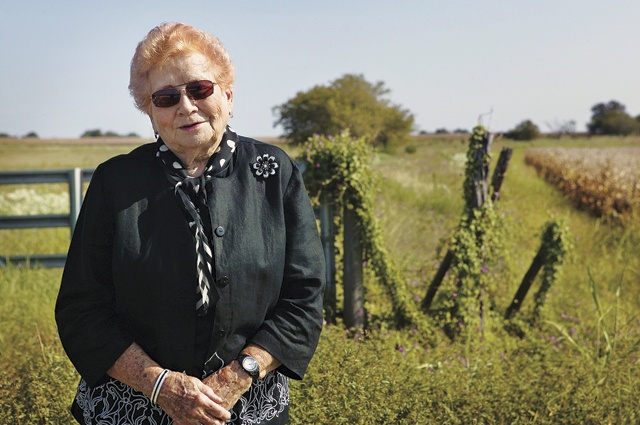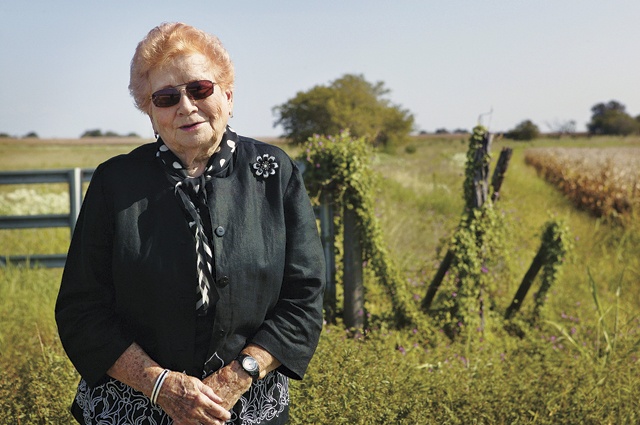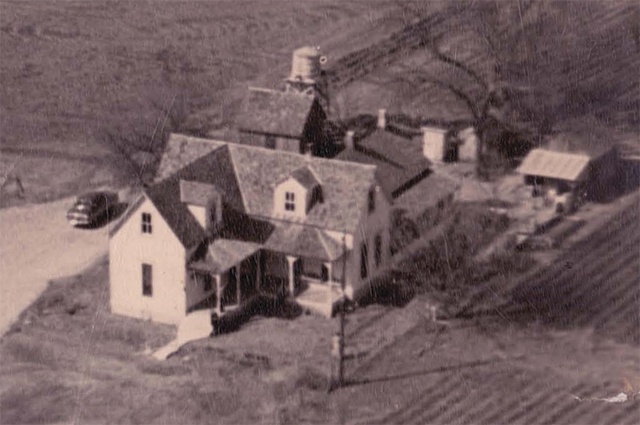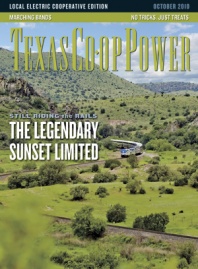From Bartlett’s old brick-lined Clark Street, head south at the caution light, hang a left just after the doughnut shop and go down a lime rock county road for half a mile.
After the curve, pull in the first weed-covered drive and wait for the dust to settle. You’ve arrived: The location of the first house in the United States energized with power financed under the Rural Electrification Administration (REA)—the federal program created during the Great Depression that helped energize the nation’s largely darkened rural areas.
You won’t find any indication this place has significance. No historical marker. Not even the old farmhouse. It was torn down years ago. Former owners Charles and Lydia Saage are long gone, as are their four children. But Mary Saage (pronounced “SOG-gy”) can still tell the story about the dawn of electricity hereabouts.
“That was my in-laws’ house,” said Mary, the energetic 90-year-old widow of the Saages’ youngest child, Curtis. She recently led visitors to the site, which looks like countless vacated rural homesteads.
To understand the significance of this place, you need to think about another time, about life 75 years ago—before Americans began to take electricity for granted. In the 1930s, the vast majority of the nation’s farms and ranches were without electricity. Back then, people lived in two worlds: Residents of cities and small towns enjoyed modern conveniences powered by electricity; rural folks didn’t.
The residents of Bartlett, a town of about 2,000 between Austin and Waco, were first served by central electric service in 1905. But the folks in nearby rural areas did without.
In 1935, three local farmers each put up $50 to create what was originally named Bartlett Community Light & Power Company in a cooperative effort to bring power to farms outside the city limits—sites that investor-owned utilities deemed were not lucrative enough to serve. Later that year, BCL&P received a $33,000 loan from the REA to build a 59-mile power line. Their plan: Create a distribution system to serve nearby farms and contract with Bartlett’s municipal utility to generate the electricity and provide other services, such as reading meters.
At the time, neither Texas nor the other 47 states had laws authorizing the formation of electric co-ops. Not until 1937, with the approval of the Electric Cooperative Corporation Act, did Texas permit people to obtain a state charter and organize a member-owned electric co-op, according to a 1980 case study.
In November 1935, BCL&P volunteers and paid employees began setting the first section of 36 poles. Finally, on March 7, 1936, after paying a $5 deposit for an electric meter, Charles Saage was given the big honor: throwing the switch.
“They were the first on the line going down that road out of Bartlett. That was the reason they got electricity before anybody else,” said Mary, whose first summer job was working in the office for what would soon become Bartlett Electric Cooperative, a co-op that continues today, with service to about 10,000 meters.
Awhile ago, longtime co-op employee Linda Ferguson asked Mary for a photo of the old farmhouse. After a lengthy search, Mary found one, a black-and-white aerial shot showing a tidy home with porches, barn and washhouse out back. Look close and you can also make out something else: a single power pole.
——————–
Charles Boisseau is associate editor of Texas Co-op Power.




